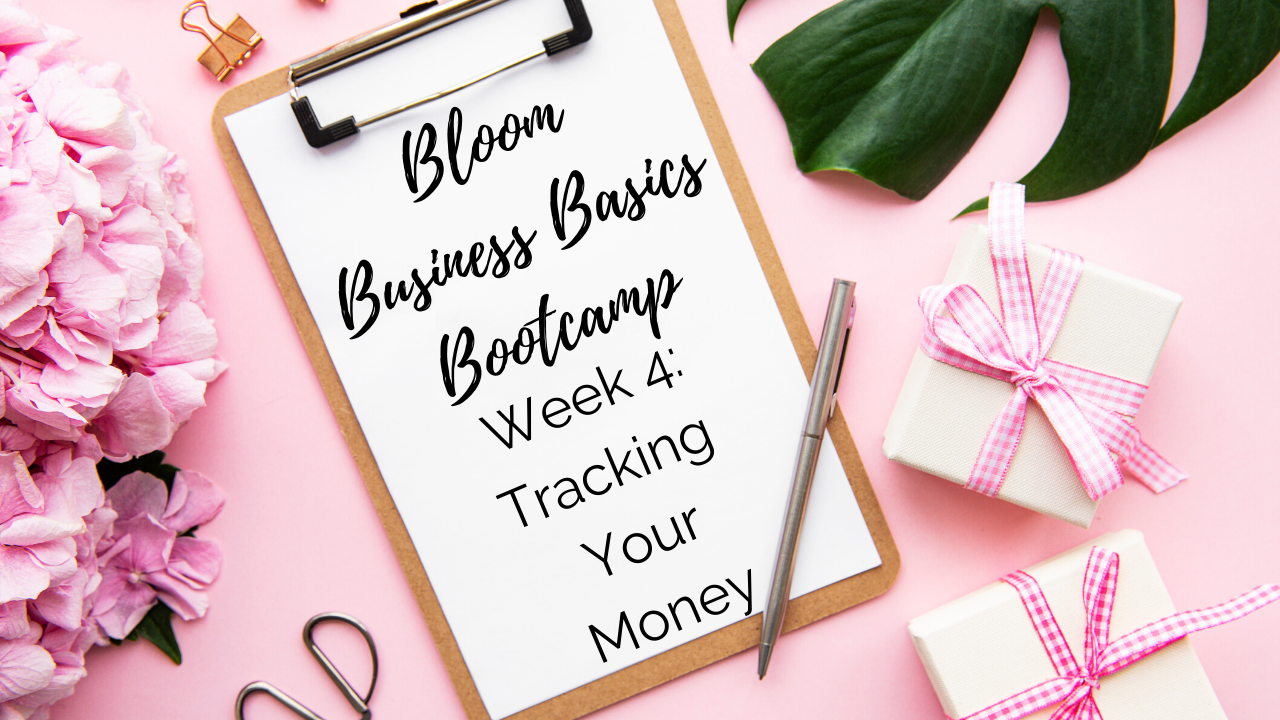Bloom Business Basics Bootcamp Week 4: Tracking Your Money
Jun 15, 2020
Lets face it: you are in business to make money! You make and sell your awesome goodies to make money, which in turn allows you to buy more materials, pay yourself for your valuable time, and more MORE awesome things to sell.

As a handmade business owner, I can honestly say that one of the most difficult things for me is keeping accurate track of my money. I’m not a numbers person, I don’t find accounting particularly easy, and I really really don’t like when it comes to bookkeeping time. I do, however, understand that keeping track of my money is vitally important to my business...so while I’m no accounting pro, I do take the time to carefully track where my business’ money comes from and where it goes.
There are two pretty basic categories to track here: expense and income.
(There’s a third category called sales tax, and I’ll get to that at the end).
Expense is the money your business spends.
Income is the money your business brings in.
In order for your business to be profitable, your income needs to be greater than your expenses.
Simple so far, right? See...it’s not THAT bad.
Here’s the catch, though: in order to really know that you are making money, you have to track EVERY SINGLE PENNY that your business spends and EVERY SINGLE PENNY that your business brings in. THAT is what can get difficult...but if you get yourself set up on a system, it gets easier and easier.
What do I track?
For expense, you want to include things like:
💸 continuing education (courses, conferences, etc)
💸 materials (including any sales tax and shipping you pay on the materials)
💸 office supplies (paper, ink, envelopes, etc)
💸 packaging (bags, mailers, bubble wrap, etc)
💸 shipping costs
💸 show fees
💸 subscriptions (i.e., email service provider, Canva, professional publications)
💸 travel expenses (gas, hotel, meals, tolls, etc)
💸 tools
💸 website fees
For income you want to include things like:
💰 online sales (i.e., Etsy, website, Amazon Handmade, etc)
💰 show sales
💰 wholesale/gallery sales or commissions

Re: that third category I mentioned?
Sales tax.
You don’t “charge” sales tax, nor do you “pay” sales tax. You collect sales tax and you remit sales tax to the appropriate state/county.
Your business does not charge the sales tax, the state does. You are simply responsible for collecting and remitting it per local and state tax laws. I recommend reviewing this resource showing a state-by-state outline of regulations regarding the collection and remittance of sales tax.
It is well worth your investment to consult with an accountant or tax preparer who is familiar with these laws and can guide you towards making sure you have the proper licensing to collect and remit in the states where you do business.
Ok...but HOW do I track all of this?
If you are wanting to “bootstrap” your bookkeeping efforts, the simplest way to do so is to track all of your expenses and income using a spreadsheet. I personally prefer to use Google Sheets because it is cloud-based and free, plus it operates pretty much the same way that Microsoft Excel works. Google Sheets also provides a gallery of free templates, and a quick Google search for “free Google sheets budget template” will yield a long list of free resources for you to review. 
Paper + Spark has great resources for bookkeeping that are specifically created for handmade sellers like us. You can purchase her spreadsheets in a bundle or a la carte...and believe me, they are worth every penny! They are customizable for your business’ unique accounting needs.
In my business, I use the desktop version of Quickbooks to track all of my income and expenses. Quickbooks is a paid accounting software program that provides you with reports and tracking features that will make it easier for you (or your tax preparer) come tax time.
Whichever option you choose, the important thing is that you are consistently tracking and monitoring what your business spends and what your business earns. I personally have one day a month where I sit down and enter all of my receipts and income into my Quickbooks account, and at the end of the year, tax time is much easier for me (ok...for my accountant). This is one of the more challenging parts of being a business owner, but knowing your numbers is the key to knowing if and how you are indeed making money!
![]()



